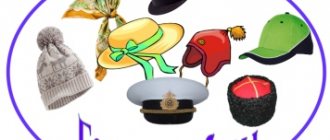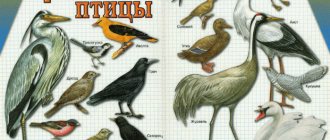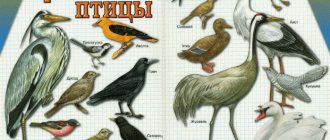Speech game with toys 3. Bunnies
Let's get acquainted with toy bunnies: part 1.
We teach kids to describe pictures of toys, compare, analyze, use verbs exactly according to their meaning (distinguish between perfective and imperfective verbs), use diminutive suffixes (baby, bunny, hare, hare, eyes, ears, tail, etc. ).
To play, you will need a picture or three toy bunnies, which you will dress in different ways. These can be bears, dolls and any other toys instead of bunnies.
The first bunny is Shustrik. He is wearing a jacket and trousers. The second is Toropyzhka. He is wearing a jacket that is buttoned incorrectly - as a result, one bottom edge is higher than the other, sticks out unattractively, his hat is on his side, his scarf is tied sloppily on his side. The third one is Catch-up. He hasn't had time to get dressed yet, he's only wearing trousers.
Look at pictures or toys with your child and tell him a story about three bunnies.
“Vanya and Tanya live with three toy bunnies. The first bunny is always in a hurry, in a hurry and therefore does a lot of things wrong. That’s what the guys called him – Toropyzhka. Find it in the picture. How did you guess that it was Toropyzhka?
The second bunny does everything deftly, skillfully, quickly, correctly, smartly. Can you guess what his name was? What would you call an agile, nimble bunny? Interesting names you came up with! Do you want to know what Tanya and Vanya called him? They called him Shustrik because he was very... (smart).
The third bunny is always late, does not have time, and does things very slowly and leisurely. They often tell him: “Catch up with us.” That's why they named it - what do you think? Give him a name that makes it clear that he does everything slowly. What would you call such a bunny? (Encourage any option the child has - this is his word creation, and offer your own options). And Tanya and Vanya called him that - Catch-up.
Find Shustrik and Catch-up in the picture. How did you guess that this is Shustrik, and this is Catch-Up (the child explains).
Playing riddles: part 2.
These toy bunnies are brothers. They are very similar to each other. How are they similar? (They have long ears, short tails, round eyes, small noses, they are white, fluffy, they can jump, they love carrots, etc.).
How are bunnies different? (Look at clothes, shoes, eyes, noses, what the bunnies do).
How can you call a bunny affectionately? (Bunny, bunny, bunny, bunny).
What is the affectionate name for a bunny's ears? Yes, ears.
What is an affectionate name for your nose? (nose).
Eyes - ? (eyes)
Paws - ? (paws)
Tail? (tail)
Let's play riddles. I'll wish for a little bunny, and you guess his name.
You describe a bunny - a toy or a bunny from a picture, and the child must guess his name.
“This little bunny is very cheerful. He has big blue eyes. The bunny's nose is black and small. The bunny's ears are long and his tail is short. He is wearing a red jacket and blue trousers. The jacket has a blue collar and many round buttons. The little bunny loves to sing songs. Who is this?"
Now tell me a riddle: “My little bunny... He has.... The eyes of a bunny... The little bunny has a nose... Bunny loves...” (We help the baby construct a statement - a description, giving him support - the beginnings of phrases).
Who does what: part 3.
Every morning Tanya and Vanya play with the bunnies. Look at the toys (act out a scene). Toropyzhka and Shustrik have already gotten out of bed (we show), and Catch-up is still getting up. And it always happens. Listen and guess who is doing what (the child finishes the end of the phrase by analogy).
- Shustrik has already washed his face, and Catch-up is still... (washing himself).
- Shustrik has already gotten dressed, and Catch-Up is still...(getting dressed).
- Shustrik has already brushed his teeth, and Catch-Up is still...(cleaning).
- Shustrik has already had breakfast, and Catch-up is still...(having breakfast).
- Toropyzhka and Shustrik are already getting ready for a walk, and Catch-up is still...(getting ready).
On the topic: methodological developments, presentations and notes
Summary of a group speech therapy lesson in the middle group on the lexical topic “Toys”.
Summary of an open speech therapy lesson for children of the senior group with speech and language development on the topic “Toys.”
Goal: - expansion and activation of the vocabulary, development of coherent speech.
Lesson on the topic “Toys” for older preschoolers.
This lesson can be used in the formation of lexical and grammatical concepts in preschoolers with ODD.
Summary of a subgroup speech therapy lesson in the senior group on the topic “Toys.”
Speech game on the topic “Toys” 4. “How we play”
We learn to select actions (verbs) to an object (noun).
Tanya and Vanya love to play with toys. And they want to know how you play with your toys. Let's tell them about our games (you can use a toy phone). You “dial a number” on a toy phone and start a conversation: “Hello, Tanya and Vanya! This is Danilka calling you. How are you? We are playing, do you want to know how? Now Danilka and I will tell you”:
Danilka (your child’s name), what are we doing with the ball? We roll, throw, catch (we choose words together with the baby). If a child wants to show how he does it, let him show all the actions right there. During the demonstration of actions, he can remember new actions and name them too, or he can come up with them.
- What does the ball do? Rolls, flies, bounces, bursts, jumps, jumps, hits the floor, etc.
- What do we do with the doll? We put the doll to bed, feed, drink, dress, undress the doll, rock it, and take it for a walk.
- What does the doll do? Walks, eats, sings songs, dresses, walks, dresses up, plays, dances.
- What do we do with the car? How do we play with it? We drive, load bricks into the back, honk the horn, catch up with other cars, stop, brake.
- What does the machine do? It drives, rushes, stops, accelerates, skids, drives into a garage, brakes, rolls over, breaks down, gets stuck, drives out, overtakes other cars.
For this game you can choose any toys that your child loves.
Speech game with toys 2. “Teams”
We teach the child to use verbs in the imperative mood in speech. We prevent and correct grammatical errors in children's speech.
Tanya and Vanya's toys love to follow their commands. Let's teach your toys to perform different commands.
Ask your child to choose a favorite toy to teach. The toy (in the hands of an adult) carries out the baby’s command only if he has not made a grammatical error. In case of an error, the toy “wait” for the child to correct his mistake himself or with the help of adults.
First, you help the child give commands to the toy: “Ask the doll to dance, lie on its back, sing, etc.”, then the child comes up with the commands, and you only help him, suggest the correct option if necessary. In the future, you can change roles with the child.
Below I give a selection of words that children very often make mistakes and say, for example, like this: “lie down”, “wave”, “sing”, “wake up”. These mistakes will very quickly disappear from children’s speech after our fun game. The main thing is to repeat the game many times with different toys and different teams. Commands can be made by an adult, a father and mother, or a child at your request - come up with your own options! Have fun playing!
Sample commands for playing with a toy: sit down, bend over, wave your hand, sing, dance, draw, run, jump, sleep, wake up, clap your hands, stomp, lie on your back, lie on your tummy, comb your hair, ride, sit, jump over ..., touch your nose (ears, tail, mouth), etc.
MAGAZINE Preschooler.RF
Summary of a lesson on speech development in the senior group “Compiling descriptive stories about toys according to a diagram”Prepared by: teacher of the 1st qualification category Belyaeva Lilianna Viktorovna, Moscow region, Ruza urban district, Tuchkovo village.
Tasks:
Educational:
- to develop the ability to talk about a subject using a model, to describe it
- improve the ability to coordinate nouns with numerals.
Educational:
- develop the ability to write a story about a subject
- develop the ability to use a variety of means of expressive speech
- develop logical thinking and memory.
Educational:
- develop children's learning skills (the ability to answer questions with complete answers, listen carefully to the answers of their comrades)
- create a positive emotional mood.
Preliminary work: examining toys, role-playing games “Toy Store” , “Zoo” , didactic games “Riddles and Answers” , “Wonderful Bag” , learning riddles.
Equipment: children's toy Parsley, toy truck, toys in a chest for writing descriptive stories (soft toy hedgehog, wooden matryoshka, doll, car), object pictures (airplane, ball, dragon, bicycle, doll, ship), diagram for a descriptive story, magnetic board, magnets, radio tape recorder, music disc.
Progress of the lesson:
A surprise moment: Petrushka drives into the group in a truck.
Parsley: Hello, guys! I am Petrushka, a merry girl, I came to meet you!
Parsley greets the guys. If children want to touch Parsley, give them this opportunity.
Educator: Hello, Petrushka is a cheerful girl! You came to visit us and we are very glad to see you. How did you get to us?
Parsley: I arrived in my favorite truck and I want to talk about it, but this magic card will help me - a hint (hangs a diagram of a descriptive story about toys on a magnetic board).
Petrushka gives an example of a descriptive story about a car for children: “My toy is called a truck. The car is large. My truck has a red body, yellow cab, black wheels, and lights. The cab, body and wheels of the truck are plastic. I really like to imagine myself as a driver, driving my truck, washing it and repairing it if it breaks down .
Educator: What a wonderful truck you have, Petrushka.
Parsley: Guys, I came to you for a reason. I really wanted you to tell me about your favorite toys too. I am the cunning Parsley and have encrypted words in such a magic card that will help you tell about the toy.
Parsley hangs up a diagram of a descriptive story about toys.
Parsley: I brought you a big chest, I put various toys in it. Your task: take the toy and tell about it using my encrypted clues.
Children take turns choosing toys and writing descriptive stories about them using a diagram.
PHYSICAL MINUTE.
Educator: Guys, let's have a little fun with Petrushka to some fun music
(Physical training is held to cheerful music).
Parsley: Guys, who wants to play with me? "Funny Counting" together . You will count with me to five, saying the number and naming the toy in the picture. Be very careful!
Children count together with Petrushka: one plane, two planes, three planes, four planes, five planes.
(pictures: plane, ball, dragon, bicycle, doll, ship)
Reflection:
Parsley: Guys, tell me, was it difficult to play with me? What was the most difficult? What was the easiest thing?
Petrushka says goodbye to the children and leaves in a truck to the music.
| Next > |





